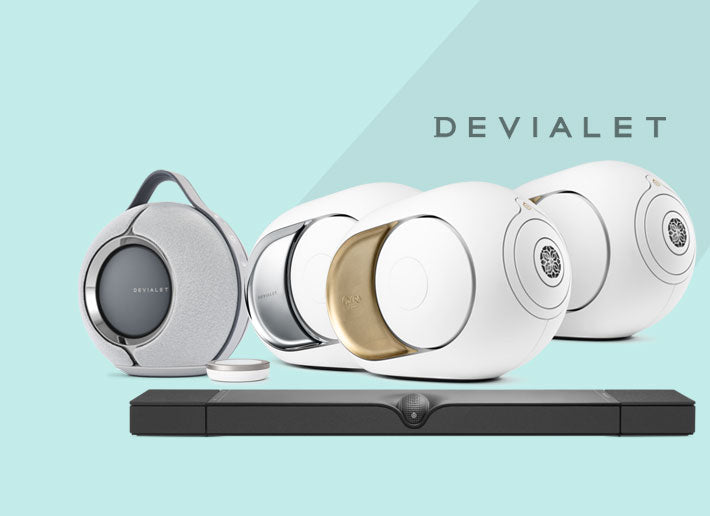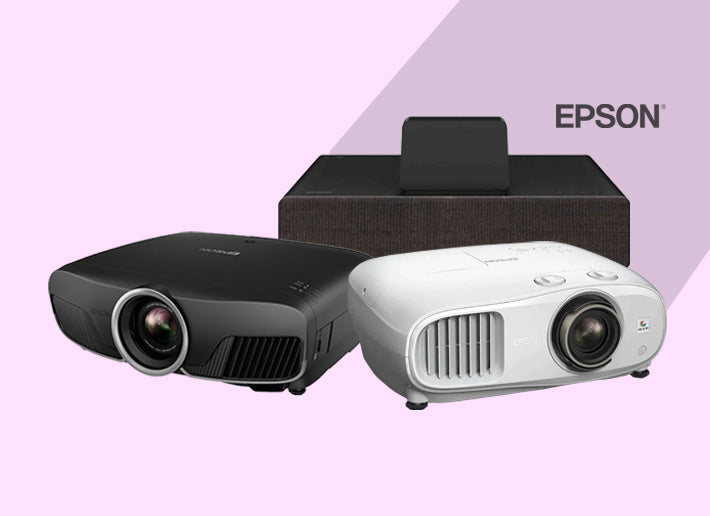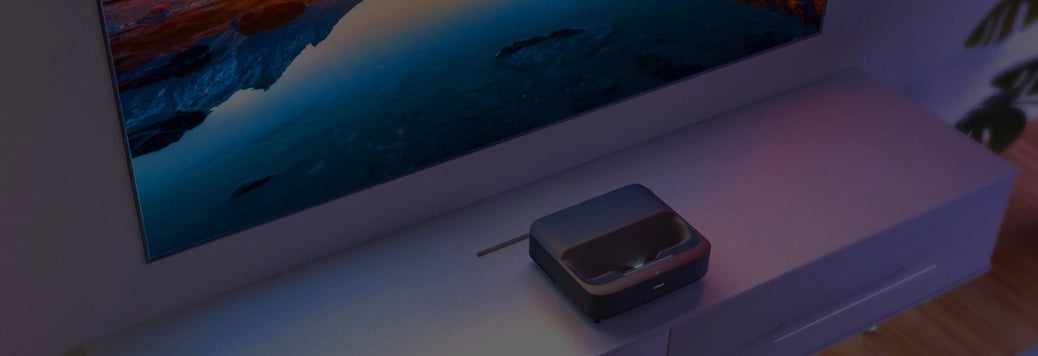We dive into the world of ultra-short throw projector based displays, where inches make miles of difference and run through suitable screen choices so you can transform your space into a cinematic wonderland
In a world where bigger is often better, the ultra-short throw projector has pulled off the ultimate magic trick—turning inches into feet and walls into windows to other worlds. But like any magician worth their salt, these technological marvels have a secret: their true power lies not in their lenses, but in the canvas they paint upon.
Whether you're a movie buff, a gaming connoisseur, or just someone who likes their Netflix larger than life, buckle up.Let’s look at some important considerations that will transform your living space into a portal of endless possibilities—all from a projector that’s closer to your wall than you are to your remote control. Here’s what you need to know.
Fixed Frame vs. Motorised Screens and Image Quality
Fixed frame screens offer the best image quality due to their consistent tension, but they're a permanent fixture. Motorised screens offer flexibility but may suffer from waves or wrinkles over time. Some manufacturers now offer "rollable" tensioned screens that aim to combine the best of both worlds. You will need to consider your room's aesthetics and multi-use needs when choosing between the two.
Look for screens with high contrast ratios (ideally 1,000,000:1 or higher) for deep blacks and vibrant colours. It is important to consider the screen's colour neutrality – it should not add any tint to the projected image. Some advanced screens offer HDR enhancement features. Screen texture is also crucial. A smooth, uniform surface minimises artefacts and ensures sharp images./p>
Screen Material Considerations and ALR Capabilities
Ultra-short throw projectors require specialised screen materials due to their unique projection angle. You ideally want to look for screens with angular-reflective materials that direct light back to the viewer rather than scattering it. Some advanced materials incorporate multiple layers, including a light-absorbing layer to improve contrast. Consider options like optical screen surfaces with microscopic ridges or lenticular surfaces designed to optimise light reflection from steep angles.
Ambient Light Rejection (ALR) screens for ultra-short throw projectors often use a combination of specialised coatings and layered structures. Some use a series of micro-lenses or optical filters to selectively reflect the projector's light while absorbing ambient light. High-end ALR screens can reject up to 90% of ambient light, allowing for clear images even in bright rooms. Consider the specific light conditions in your space when choosing the level of ALR you need.
Screen Size, Aspect Ratio, Gain and Viewing Angles
Ultra-short Throw projectors can typically produce images from 80" to 120" diagonally. When choosing size, follow the THX recommended viewing distance of 1.2 times the screen width for 1080p content, or 1 times the screen width for 4K. For example, for a 100” screen, you want to sit at 110” and 92” for 1080p and 4K content respectively. When it comes to aspect ratios, 16:9 is generally standard. However, some enthusiasts opt for 2.35:1 for a more cinematic experience.

Image credit - BenQ
While some screens offer masking systems to switch between ratios, it gets trickier when selecting screens with the right gain. Gain is a double-edged sword and higher gain (>1.0) can increase brightness but often at the cost of viewing angle and uniformity. For ultra-short throw projectors, lower gain screens (0.6-1.0) usually perform better due to the steep projection angle. Some advanced screens use variable gain across the surface to optimise brightness and viewing angles for ultra-short throw setups.
Compatibility and Installation
Ultra-short throw-compatible screens often have specially designed surfaces to handle extreme projection angles without hot-spotting or colour-shifting. Some use microstructures or layered materials to optimise light reflection at steep angles. Ensure the screen you choose is explicitly rated for ultra-short throw projectors to avoid issues like image distortion or uneven brightness
Image credit - ProjectorScreen.com
A precise installation is crucial for ultra-short throw setups. Even slight misalignments can cause noticeable distortion. Some screens come with adjustable mounting systems to fine-tune positioning. Consider screens with built-in levelling tools or laser alignment markers. For motorised screens, it is imperative to ensure the housing is perfectly level to prevent uneven drop and retraction.
Our Recommendations
The right screen opens up new possibilities for shared experiences. It turns movie nights into events, gaming sessions into immersive adventures and sports broadcasts into larger-than-life spectacles. It has the power to bring family and friends together, creating a focal point for shared entertainment that rivals or even surpasses the traditional movie theatre experience. With that in mind let’s look at some products that pair well with ultra-short throw projectors.
Elite Screens’ Aeon CLR Series is a premium fixed frame screen designed specifically for ultra-short throw projectors. They are best suited for:
→ Dedicated home theatre rooms and permanent installations
→ For users who prioritise picture quality and consistency over flexibility
Elite Screens’ Kestrel Tab-Tension CLR Series is a motorised screen designed for ultra-short throw projectors and offers flexibility for multi-use spaces. They are best used in:
→ Multi-purpose rooms or where you want to hide the screen when not in use
→ For users who value versatility and space-saving options
No matter what you ultimately decide to choose, you're not just buying a product, you're unlocking the full potential of your ultra-short throw projector and opening a window to limitless entertainment possibilities.
Also Read: Difference Between Standard, Short Throw and Ultra Short Throw Projectors
Making the Right Choice
The right screen doesn't merely display an image, it brings it to life. It preserves the inky blacks in a noir film, makes the vibrant colours of an animated feature pop and ensures that every detail in a nature documentary is crystal clear. It maintains image integrity whether you're watching in broad daylight or total darkness, ensuring that your ultra-short throw projector performs at its peak regardless of ambient lighting conditions.
Moreover, a well-chosen screen adapts your entertainment space to your lifestyle. Whether you opt for a fixed frame that makes a statement or a motorised screen that disappears at the touch of a button, your choice reflects and enhances your home's aesthetics and functionality. It transforms your living area into a multi-purpose space that can switch from a cosy family room to a state-of-the-art home theatre in seconds.
Lastly, let's not forget the long-term value proposition. A quality screen can outlast several projector upgrades, making it a sound investment in your home entertainment future. As the resolution and brightness capabilities of projectors advance, a top-tier screen will continue to showcase these improvements, futureproofing your setup to a significant degree.
Explore our premium range of ultra-short throw projectors and compatible screens if you’re considering a purchase for your personal space or get in touch to learn more. Our team of experts can help you get up and running in no time.









